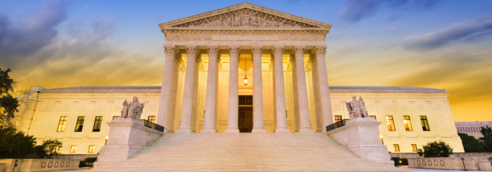Step 1: Transition to the second part of the warm‐up by asking students to recall the 3 branches of government and share examples of what agencies might constitute those branches. Some examples are the Environmental Protection Agency (EPA), Food and Drug Administration, and Department of Energy. Then proceed as a class to fill out the first column of the KWL chart.
|
Know
|
Want to Know
|
Learned
|
|
What do we know about the relationship between executive branch agencies, such as the EPA, and the legislative branch with regard to interpreting laws and setting regulations?
|
What do we want to know about the relationship between executive branch agencies, such as the EPA, and the legislative branch with regard to interpreting laws and setting regulations?
|
What have we learned about the relationship between executive branch agencies, such as the EPA, and the legislative branch with regard to interpreting laws and setting regulations?
|
|
|
|
Step 2: State that regulations are rules set forth by agencies of the federal government to ensure that the laws Congress passes are followed. The EPA is an example of a federal agency that interprets laws from Congress to set regulations on various industry activities such as turning waste allotments into fresh water and how manufacturers monitor chemical emissions.
Step 3: Debrief column 1 and then proceed to column 2.
Step 4: Share with students that in today’s lesson they will be exploring the relationship between agencies in the executive branch and courts in the legislative branch. Students will then examine how these agencies set forth regulations regarding environmental policy under the reversal of the Chevron deference.
Explain to students that in 2024, the Supreme Court reviewed the case Loper Bright Enterprises v. Raimondo, which centered on a group of commercial fishermen suing the National Marine Fisheries Service for charging $710 per day for funding at‐sea monitoring programs. The premise of the lawsuit was a regulation based on an agency interpretation of the Magnuson–Stevens Fishery Conservation and Management Act of 1976. In 2024, the Supreme Court ruled that ambiguous statutes should remain with the courts to interpret, not federal agencies, thereby overturning the precedent of the Chevron deference that had been in place for over 40 years.
Note: In the articles they will be analyzing, students should expect to gather viewpoint‐ diverse evidence on perspectives regarding intended and unintended consequences that might arise from the policy reversal. The students’ goal in conducting text analysis will be to identify the reasoning for the different perspectives and build their own opinions regarding the impacts of the policy reversal in the field of environmental policy. At the end of the class session, students will bring their opinions to a Socratic discussion.

